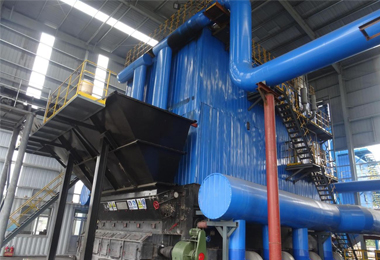
10월 . 02, 2024 20:07 Back to list
High Efficiency Steam Boilers for Industrial Applications and Energy Savings
High Pressure Steam Boilers An Overview
High pressure steam boilers are essential components in various industrial processes, generating steam at pressures above 15 psi (pounds per square inch). These boilers operate on the thermodynamic cycle, transforming water into steam through the application of heat, providing energy required for power generation, heating, and various manufacturing processes.
At the heart of high pressure steam boilers lies the principle of heat exchange. Fuel, whether natural gas, oil, or biomass, is burned in the combustion chamber. The generated heat is transferred to water in the boiler’s tubes, causing it to vaporize into steam. The pressure within the boiler is primarily controlled by the amount of heat applied and the volume of steam produced. Increased pressure enhances the energy content of the steam, allowing it to carry more heat when utilized in applications.
One of the significant advantages of high pressure steam boilers is their efficiency. They can achieve higher thermal efficiencies compared to low pressure systems, ultimately reducing fuel costs and greenhouse gas emissions. Additionally, high pressure steam can transport energy over long distances without significant heat loss. Consequently, many industries, such as food processing, pharmaceuticals, and textiles, have adopted high pressure steam systems to optimize their operational efficiency.
high pressure steam boiler

Safety is paramount in high pressure steam boiler operations due to the potential hazards associated with steam at elevated pressures. Engineers implement multiple safety mechanisms, including pressure relief valves, steam traps, and automatic shut-off systems. Regular maintenance and inspections are critical to ensure that these safety features function correctly and the boiler operates efficiently. Compliance with established codes and standards, such as ASME (American Society of Mechanical Engineers) regulations, is also vital for safe boiler operation.
In terms of design, high pressure steam boilers come in various configurations, including fire-tube and water-tube designs. Fire-tube boilers contain heated gases that pass through tubes surrounded by water. This design is typically more compact but limits the maximum pressure and steam output. Water-tube boilers, on the other hand, have water-filled tubes that are heated by gases outside the tubes. This configuration allows for higher pressures and steam production, making water-tube boilers the preferred choice for large-scale industrial applications.
Advancements in technology have also led to the development of modern high pressure steam boilers equipped with sophisticated control systems. These systems monitor performance metrics, such as temperature, pressure, and water levels, to optimize efficiency and safety. Moreover, the integration of automation technology allows for more precise control over the steam generation process, significantly reducing the risk of human error.
In conclusion, high pressure steam boilers play a crucial role in industrial processes by providing the necessary steam for energy and heat. Their efficiency, versatility, and advancements in safety and control technology make them indispensable in today’s manufacturing landscape. As industries continue to focus on sustainability and cost-effectiveness, the relevance of high pressure steam boilers will likely grow, paving the way for innovations that further enhance their performance and safety features.
-
Reliable Steam Boiler Service & Repair Experts Fast Response
NewsJun.06,2025
-
Industrial Biomass Hot Water Boilers Efficient & Eco-Friendly Heating
NewsJun.06,2025
-
Expert Steam Boiler Repair Fast, Affordable & Reliable Service
NewsJun.06,2025
-
Expert Hot Water Boiler System Diagrams for Efficiency
NewsJun.06,2025
-
Hot Water Heater Boiler Combo Efficient All-in-One Solution
NewsJun.06,2025
-
Efficient Hot Water Heater & Boiler Combo 2-in-1 Solution
NewsJun.05,2025
Related PRODUCTS






















